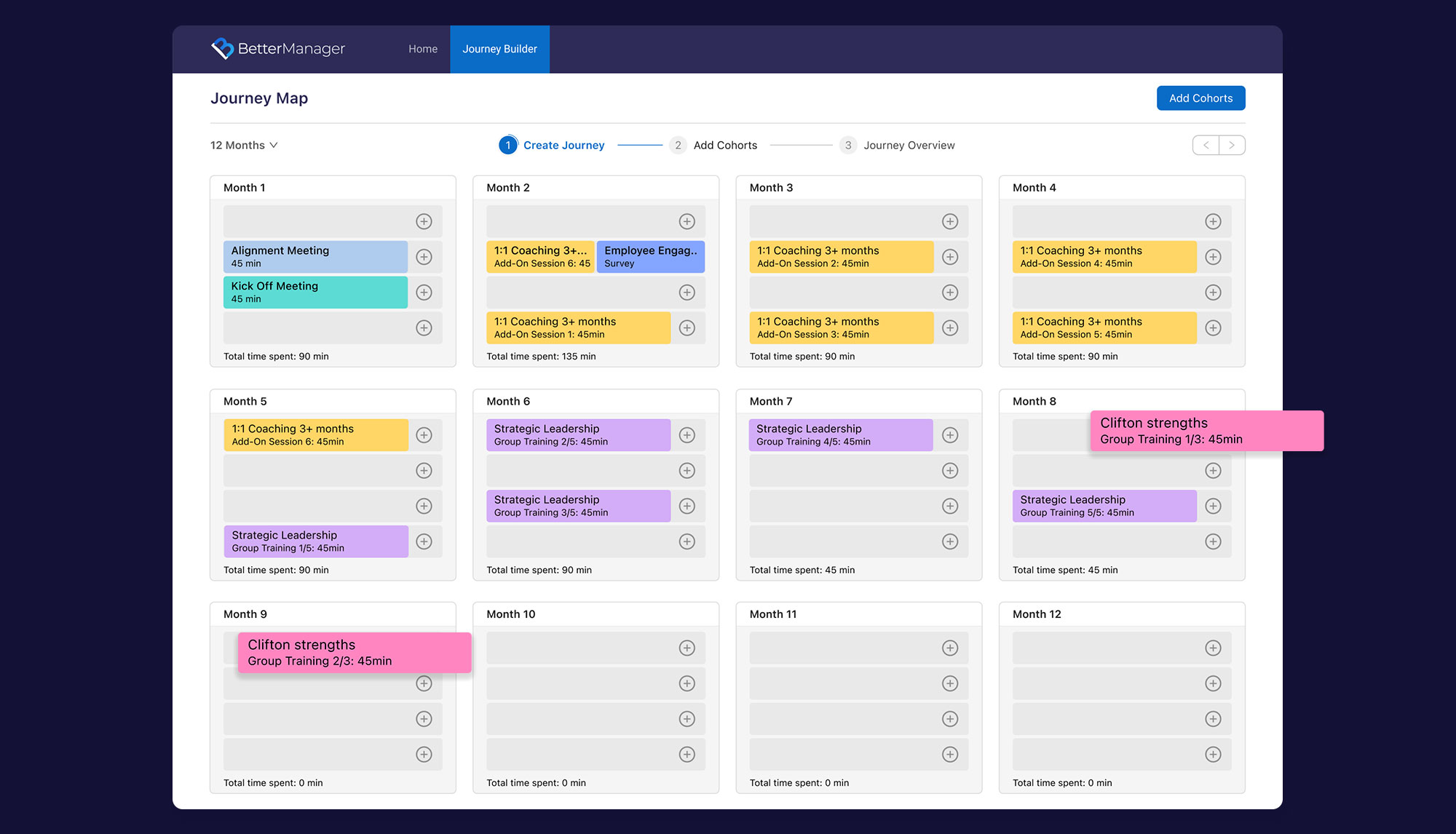
LEGO tool for the sales team. MVP.
Intro
ABOUT
The company provides leadership development products, including group training, coaching, and live events for enterprise customers.
Their Sales Team needed a simple, easy-to-use tool to make the sales process smoother for reps.
PROJECT GOAL
Develop a sales tool to automate key components of the sales process, such as proposal generation, and transfer data to the CRM.
IMPACT
I was the sole designer on this internal project. I led the UX process, shared management responsibilities, and collaborated with cross-functional teams to deliver the MVP.
TEAM
Me as a designer and strategist, project manager, 3 developers, and a data team.
MY ROLE:
• Plan the project
• Researching the problem space
• Identifying problems to solve
• Communicating with stakeholders and developers
• Testing concept
WHEN
2023 – 2024
What was achieved?
OUTCOMES
Insight gathering
Sales Reps shared their daily struggles
EXPLORING THE PAIN POINTS
• The sales proposal was created manually, which was frustratingly slow.
• Sales reps needed quick access to up-to-date program and product information, but it was scattered and time-consuming to find.
• “Approximately 85% of customers return after reviewing the proposal, requesting revisions and adjustments for various reasons”. Sales representatives were required to make updates and revisions to their proposals manually.
• Once the deal is finalized, all information is manually entered into the CRM system.

The manually created sales proposal artifacts.
How is this impacting the business?
THE REASON
Sales reps spent too much time on administrative tasks instead of focusing on revenue-generating activities.
Step into the sales reps’ shoes – from overview to details
PROBLEM STUDY
Observing the sales process firsthand helped identify key features, understand specific workflows, and gain a clear view of how users interact throughout the process.

Current sales process (based on sales rep interviews).
Breaking down the problem to find the key parts
SALES PROCESSES differentiations
There are a lot of different use cases of how the sales process looks.
It influences WHEN and HOW sales reps can create proposals for clients:
• it can be different environments, circumstances, and communication methods such as Zoom 1:1 meetings, phone calls, presentation calls, etc.
• more than 80% of the clients are coming back after the proposal and want to adjustments: phone calls, Zoom meetings, and offline meetings (rarely).
DETAILED information
Clients want to see all the details about the deal, including product description, available seats per session, timing per user, schedule, and cost with listed fees.
VISUAL map
Clients have a “calendar-based” budget mindset — they plan and allocate their spending on a quarterly/yearly basis.
They also schedule how they’ll use the purchased services, like coaching or training, over set periods (e.g., 6, 12, or 24 months).
That’s why a calendar view fits naturally with how they think and plan.
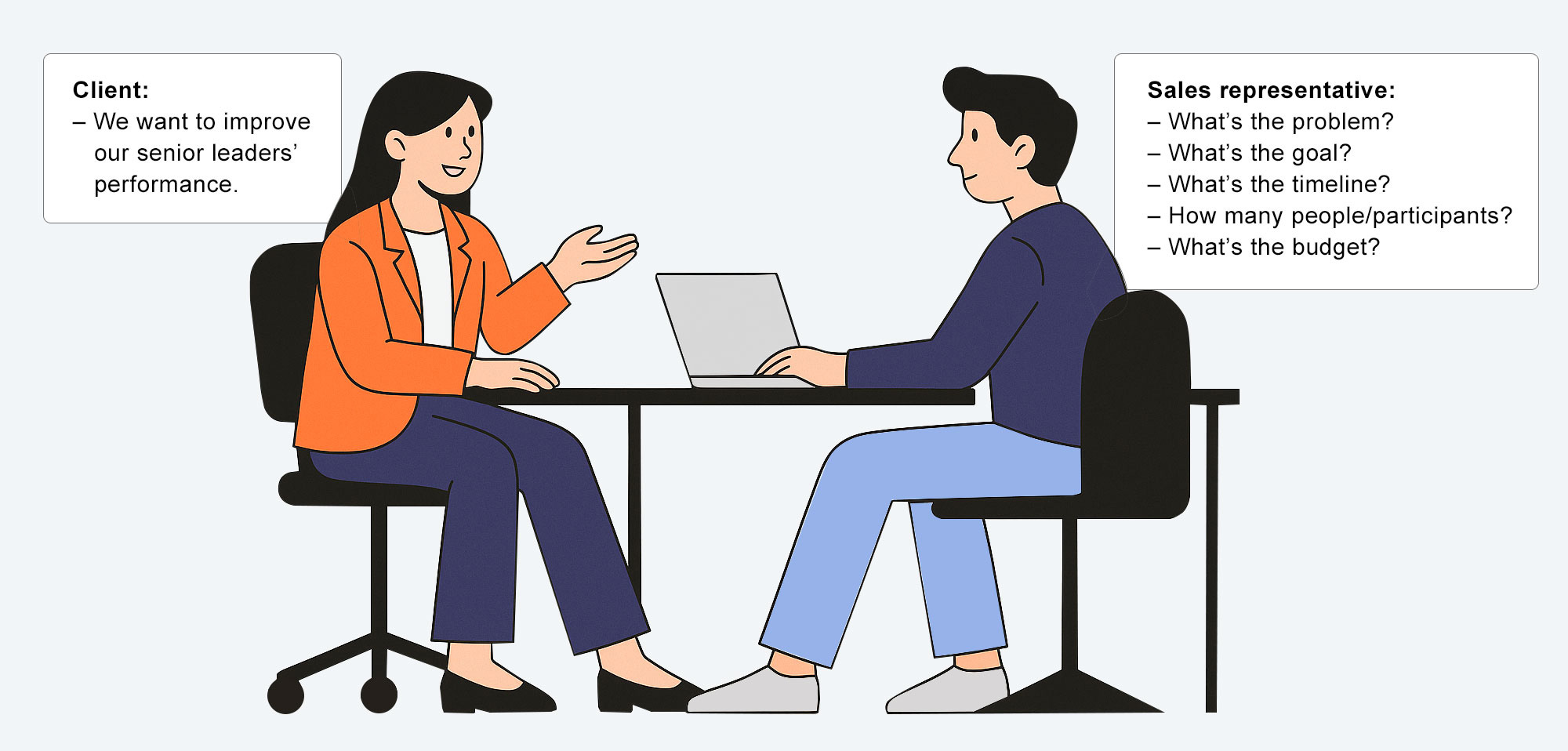
Use case: A sales representative and a client discuss the client’s needs offline.
Sales reps value a smooth process that helps them work efficiently and satisfy clients
Clients weren’t the primary users, but since sales reps aimed to satisfy them, I needed to understand the clients’ key needs.
What’s important for Sales Reps?
What’s important for Clients?
• Ability to add and manage programs and products to the Learning map
• Ability to add cohort (participants) to the Learning map
• Ability to leave a custom comment to the client about any proposed programs and products
• Ability to generate a proposal and send it to the client’s email
• Ability to see “calendar plan” (program and products per month)
• Ability to see the full detailed information
• Ability to have a printable format of the proposal
CONCEPT DECISION
Calendar view as a base for the product allocation
I was inspired by the current visual proposal presentation and generated ideas around the calendar view.
Started with lo-fi prototypes, validated the ideas with colleagues, and applied the company’s design system for product consistency and branding support.
The devil is in the details – Data extraction complexity
When the developers began planning how to extract data from the CRM, we realized it was a complex issue that influenced the design and subsequently the user experience. Thus, we spent significant time with the Data team to find the optimal solution.
Key product decisions made in collaboration with the Data team:
We decided to launch the Sales Configurator tool from the CRM.
The sales rep can launch the Sales Configurator from their CRM profile. This will assist sales representatives in tracking sales progress and gathering historical data.
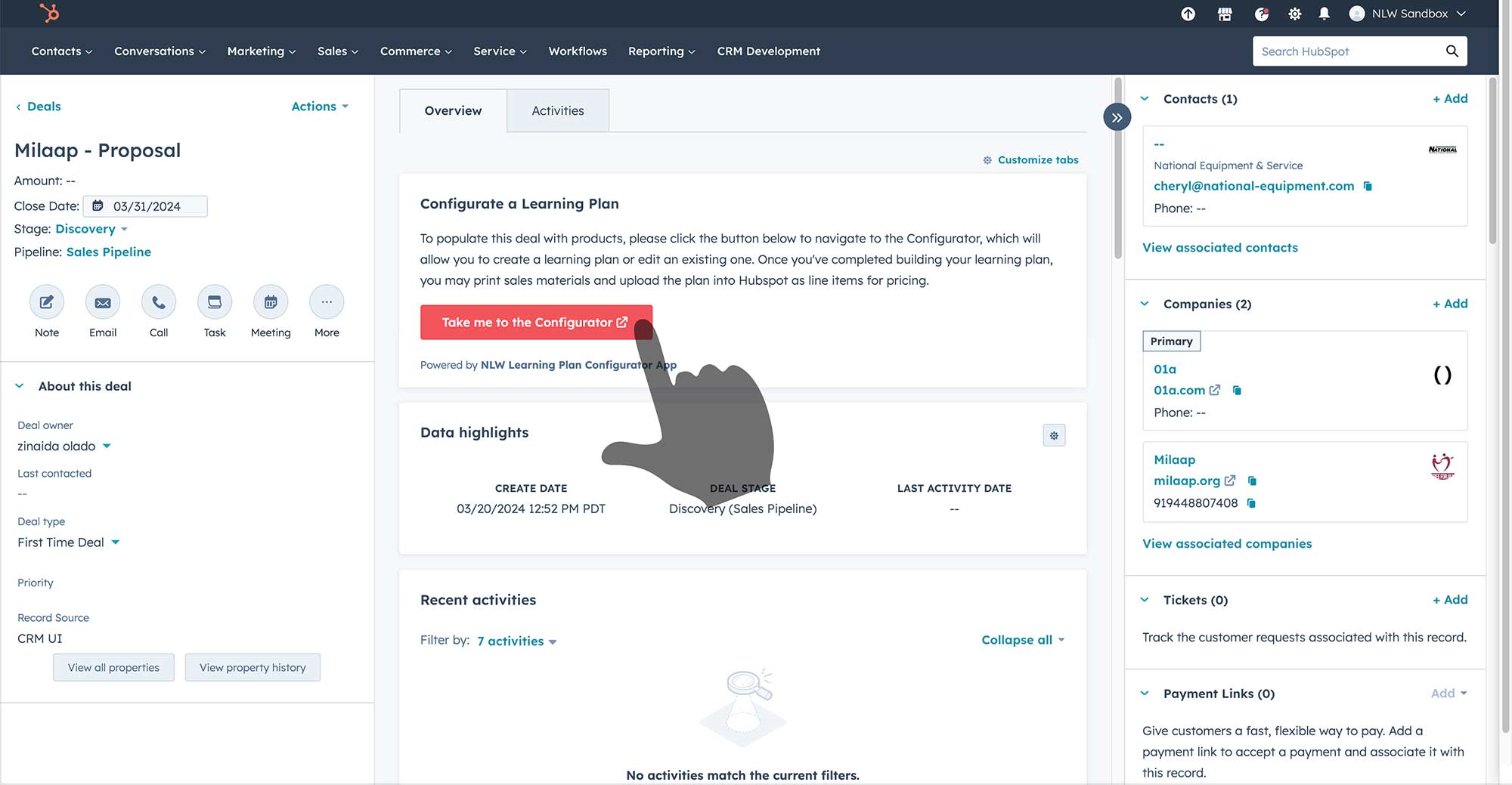
Sales reps click the red button to launch the Sales Configurator.
Finalized the operational flow and defined the Sales Configurator as the “SOURCE OF TRUTH” for all purchase combinations.
All the purchase combinations (group training and coaching products) will be pushed for scheduling from the Sales Configurator.
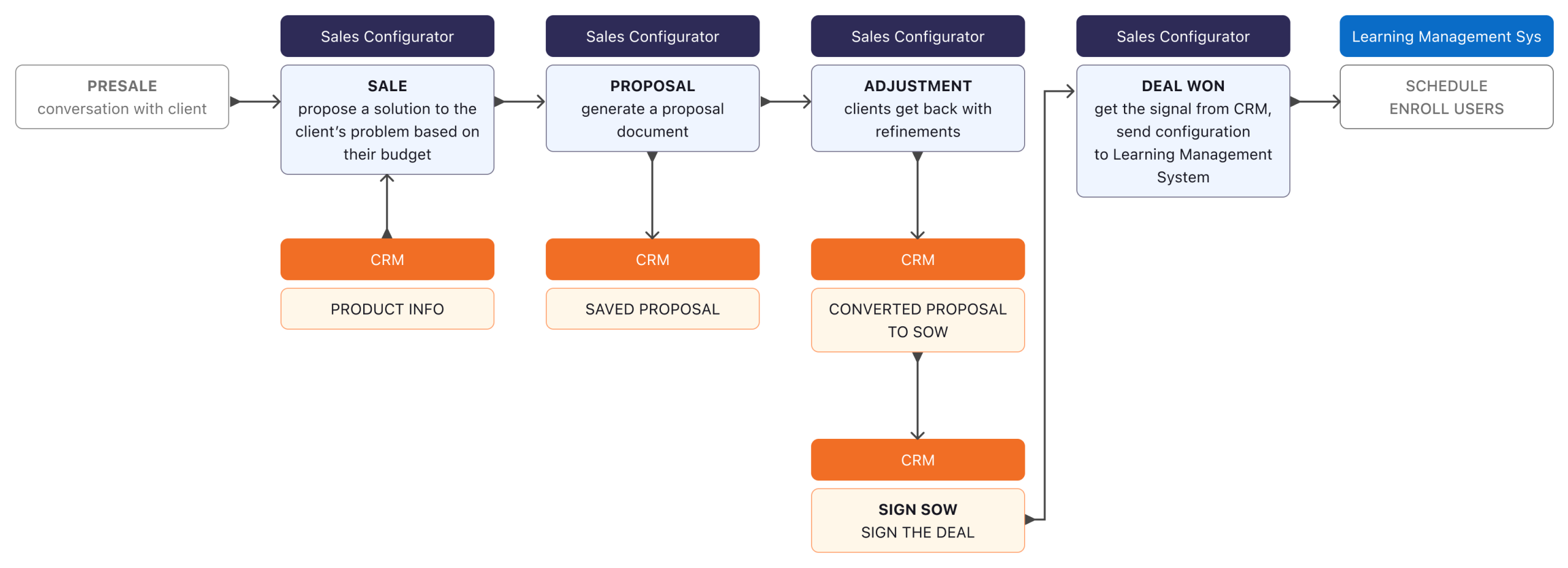
The integration process between the Sales Configurator and the CRM system.
First win – the users nailed it on the first try
USABILITY TESTING
I asked the European team to try out the new experience, and to our delight, all users were able to intuitively start and complete their sales flow, understand and use the new features, and encountered almost no hiccups along the way.
However, we received negative feedback about the product catalogs. It didn’t affect the design flow but did impact data collection, requiring collaboration with the design team to improve it.
DESIGN
Dashboard + Journey Builder calendar screen
DESIGN DECISION 1
The journey starts when the sales rep clicks “Take me to the Sale Configurator” in their CRM.
They’re directed to a dashboard to build a product map from scratch or use templates with suggested product combinations.
Drag and Drop functionality
DESIGN DECISION 2
All the items on a calendar board should be easily adjustable. The sales rep needs the ability to easily add them to the board, move to the desired month or weeks, and remove them from the board.
Additionally, we worked with the Program team to establish business rules. One of these rules limits users to a maximum of two items, either training or coaching sessions, per week.
Complications:
• Accessibility – the colors are used to differentiate products and programs. To improve visibility, I used the Color Blindness Simulator to collect a range of “safe” colors.
• Technical constraints – there was extensive discussion about the feature implementation for version 1. However, it was prioritized and implemented based on stakeholder feedback

Adding participants
DESIGN DECISION 3
Once the learning plan map is ready, the next step is to determine the number of seats for the program’s participants.
Review the final document and generate a proposal
DESIGN DECISION 4
The final step of the journey involves the sales representative reviewing the information and generating a proposal for the client.
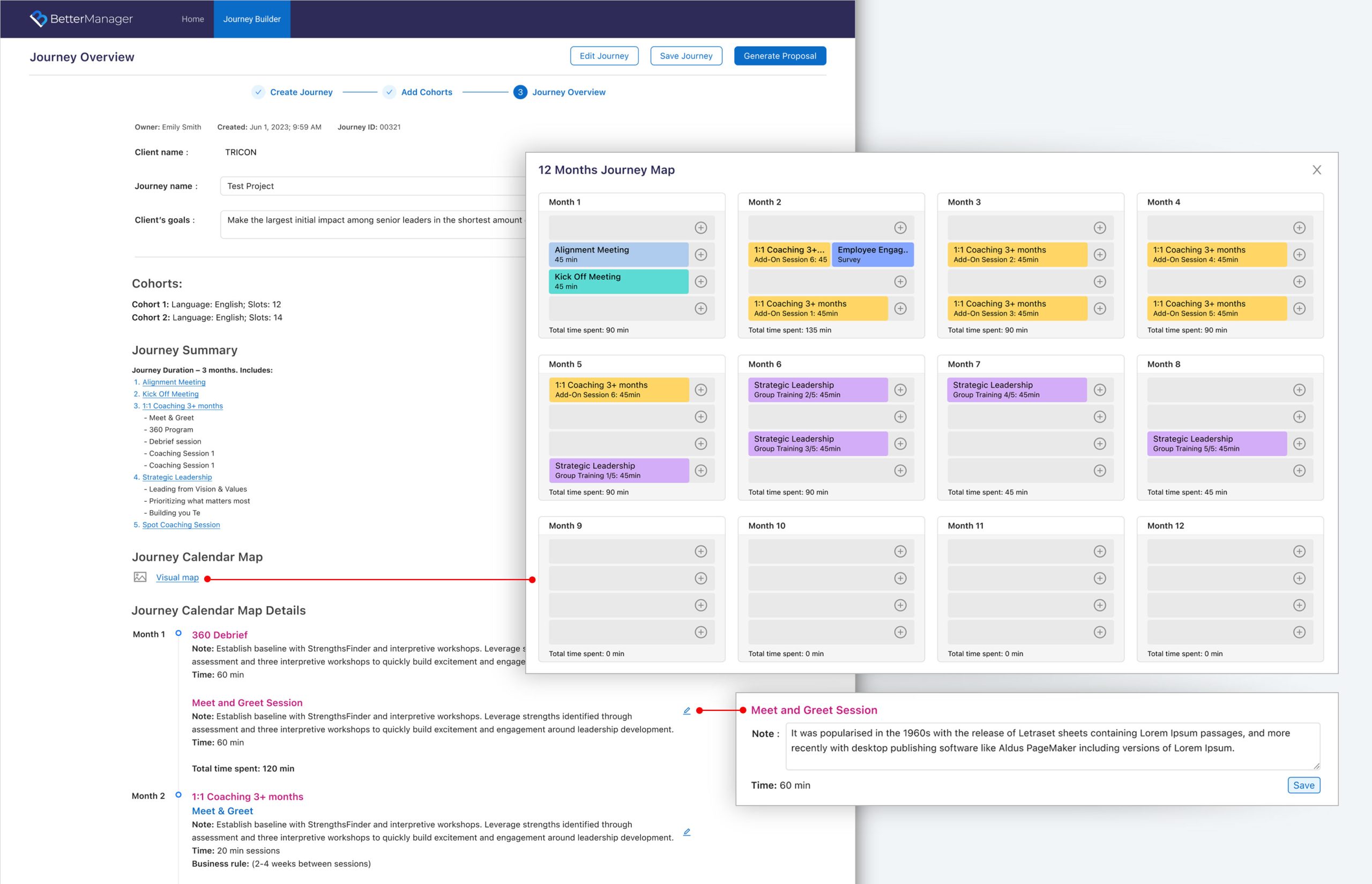
Complications:
Sales reps emphasized the need for a detailed cost breakdown, including all fees and discounts.
However, the total cost wasn’t displayed in this version due to the technical complexity of implementing the feature.
Great opportunity for business growth
The smooth experience of the Sales Configurator can be extended to a standalone product. Clients would access it directly on the company website, using AI assistance to build their purchases. This approach educates clients about the products, promotes transparency, and builds trust.
My retrospective thoughts
My leadership initially expected this project to be quick and simple—something to handle between other, more important tasks. In reality, it evolved into a long-term initiative that raised fundamental questions and required collaboration across nearly every team in the company: product, program, sales, customer success, and more. Also, the project revealed a lot of weak spots across the company — but that was actually a good thing. It gave us clear feedback on what needed to change.
My biggest takeaway? Great products are born from collaboration, not isolation.
